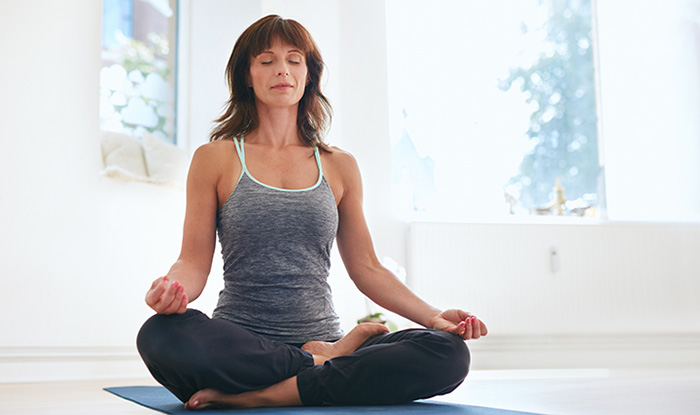28 Aug
Menopause is a normal part of aging, marking the end of a woman’s reproductive years. The process begins when women in their early 40’s start getting irregular periods, vaginal dryness, and mood swings. The signs usually last from eight to ten years before the blood completely stops flowing. A woman is officially diagnosed with menopause if she has not had her period for an entire year. It is in these 12 consecutive months that women can struggle with the menopause symptoms.
The list of menopause symptoms is long. It includes emotional instability, insomnia, weight gain, and vaginal discomfort. For some, the pain is mild and quick; but for others, it can be a stretched out nightmare. Plus, it’s a lot more common than you think. In fact, studies show that nearly 60% of American women suffer more than one symptom brought about by menopause, with one out of four seeking professional help because of the overbearing pain.
Fortunately, there are ways to alleviate these symptoms — one of which is through exercise. Besides the endorphin rush, it’s a good way to keep fit and active. That said, here are five exercises to help you reduce the pain, and improve your quality of life.
Relieving pain and menopause symptoms

Weights
One of the physical symptoms caused by menopause is weight gain, which can lead to the drastic loss of estrogen hormones and muscle density. This in turn can cause diseases such as type 2 diabetes and osteoporosis. Very Well Fit recommends lifting weights twice a week as an effective way to control your metabolism and lose weight. A good tip is to focus on compound movements as they hit every part of the body.
Aerobics
Aerobic activities like jogging help maintain a healthy weight, reduce pain, and can greatly improve your overall mood. In fact, research by the National Institute of General Medical Sciences found that those who did aerobics for six months during menopause were less likely to experience sleep deprivation and mood swings than women who did not exercise at all. As aerobics requires a lot of movement, be sure to prioritize comfort by wearing the proper attire. Pretty Me recommends going for fabrics that are breathable and sweat-absorbent, like mesh leggings or cycling shorts. For aerobics, generally anything that isn’t loose and won’t have you constantly adjusting your clothes is a good choice.
Stretching
On the other hand, light-intensity exercises like yoga can help reduce muscle stiffness and joint pain. Even just doing a ten-minute stretch before bedtime helps the “fight or flight” part of your nervous system relax. Thus, it also increases parasympathetic activity, which is the part of the nervous system responsible for rest. Of course, it goes without saying that a good night’s sleep can vastly improve your overall psychological well-being. In fact, better sleep can lead to improvement of other menopause symptoms as well.
Dancing
Workouts do not have to be boring nor repetitive. Think of dancing as another type of exercise, but one that is easier on the joints. As such, it can be performed longer than aerobics. Plus, you get to listen to good music while you are at it.

Meditation
Menopause is something every woman goes through and this period of transition can be emotionally taxing. A study published on the Journal of the International Menopause Society discovered that mindful practices such as meditation and deep breathing can help alleviate symptoms like mood swings, constant irritation, and general fatigue. Just 12 to 15 minutes of deep breathing and focus can keep your mind relaxed for the rest of the day.
Advanced treatment for symptoms of menopause
If these exercises don’t get you the results that you’re after, you can learn more about our non-surgical, minimal downtime FemiLift treatments.
Exclusively written for FemiLift.Com
By: Harley Maya



Sorry, the comment form is closed at this time.